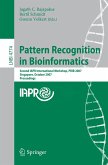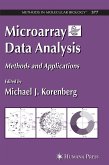In the past several years, DNA microarray technology has attracted tremendous interest in both the scientific community and in industry. With its ability to simultaneously measure the activity and interactions of thousands of genes, this modern technology promises unprecedented new insights into mechanisms of living systems. Currently, the primary applications of microarrays include gene discovery, disease diagnosis and prognosis, drug discovery (pharmacogenomics), and toxicological research (toxicogenomics). Typical scientific tasks addressed by microarray experiments include the identification of coexpressed genes, discovery of sample or gene groups with similar expression patterns, identification of genes whose expression patterns are highly differentiating with respect to a set of discerned biological entities (e.g., tumor types), and the study of gene activity patterns under various stress conditions (e.g., chemical treatment). More recently, the discovery, modeling, and simulation of regulatory gene networks, and the mapping of expression data to metabolic pathways and chromosome locations have been added to the list of scientific tasks that are being tackled by microarray technology. Each scientific task corresponds to one or more so-called data analysis tasks. Different types of scientific questions require different sets of data analytical techniques. Broadly speaking, there are two classes of elementary data analysis tasks, predictive modeling and pattern-detection. Predictive modeling tasks are concerned with learning a classification or estimation function, whereas pattern-detection methods screen the available data for interesting, previously unknown regularities or relationships.
Dieser Download kann aus rechtlichen Gründen nur mit Rechnungsadresse in A, B, BG, CY, CZ, D, DK, EW, E, FIN, F, GR, HR, H, IRL, I, LT, L, LR, M, NL, PL, P, R, S, SLO, SK ausgeliefert werden.









